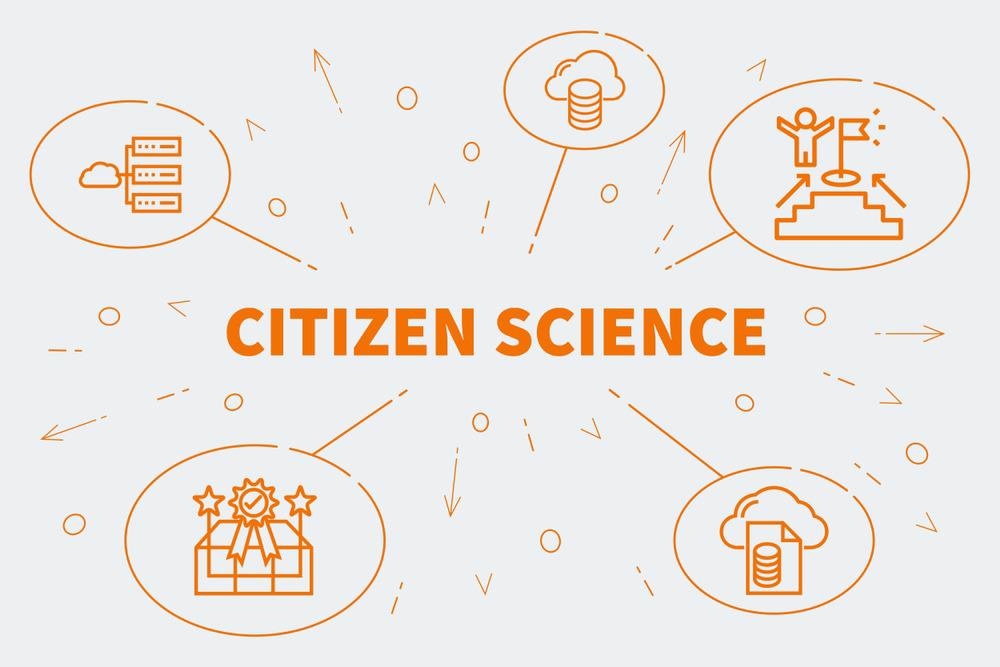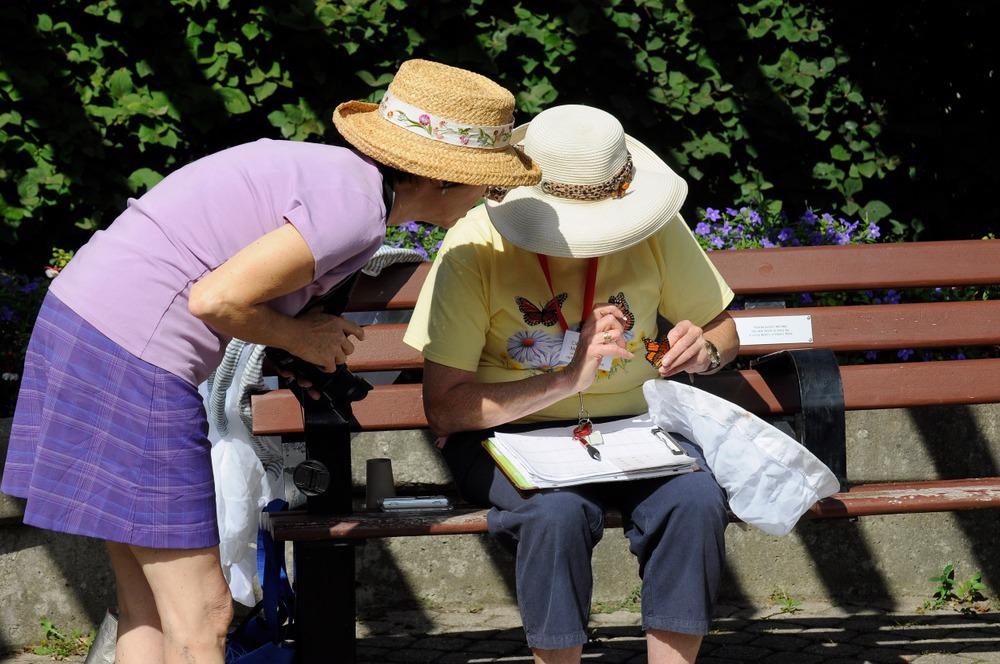The distinctions between citizen science, and typical science, are many. Traditional scientists publish peer-reviewed accredited findings, they are paid by an independent organization or the government, and their resources are more plentiful. In contrast, if one does not have a degree, a STEM job in academia, or does not fit into any of the above categories, they could be considered a "Citizen Scientist." This derivative of science typically takes the form of data collection and or the visual analysis of said data.

Image Credit: OpturaDesign/Shutterstock.com
While some may not be privy to the idea of citizen science, there are some mediums of research that could massively benefit from citizen scientist volunteers. Though they lack expertise and training, there are many protocols within the realm of exploratory science that do not require highly specified credentials. Some prominent fields which could profit from these en masse citizen scientists are ecology, proteomics, and astronomy.
Citizen Science and its Role in Proteomics
All the proteins that comprise our body, whether they be transport proteins, structural proteins, antibodies, or others, arrange themselves in highly conserved ways. This is a product of evolution and aids in maintaining homeostasis and the formation of proper enzyme kinetics.
We can attain very clear images and three-dimensional models for proteins through methodologies such as X-Ray crystallography, quantitative enzyme-linked immunosorbent assays (ELISA), and typical western blots. Though novel advancements are constantly on the rise, it is important to consider their limitations.
While some protein assays may be appropriate for X-ray crystallography, others are not. Surface forces may disturb adsorbed particles, or some proteins may not adhere to a typical rhomboid, cubic, or trigonal lattice, which will result in low-quality diffraction data. Western blots can only be adopted if primary antibodies that complement the protein are available. In both X-ray crystallography and western blotting, post-translational factors like phosphorylation, methylation, or ubiquitination cannot be detected.
To assess these more asymmetric proteins' resulting tertiary and quaternary structures, one must evaluate the moieties through visual means rather than computational means. This is because, for as good as computers are at combing through large slews of data, humans are fundamentally better at denoting themes in pictures (recall any time you were required to prove you were a human via image recognition after losing your password). With this in mind, citizen scientists have developed games like Foldit or EteRNA to unearth high-quality de novo structural models for proteins.
In one study performed by Khatib F et al., citizen scientists were offered to play the game Foldit. In this game, "players" are given Cryo-Electron Microscopy density maps that correspond to 4 segmented subunits of a prophage derived from the bacteria Serratia Entomophila. These are the Afp1, Afp5, Afp7, and Afp9 subunits. High scores are rewarded to those that can unify the Rosetta force field with map fitting. The resulting "player generated structures" are compared to protein topology maps produced by the Cryo-EM experts and model building refinement software like "Coot."
Their findings concluded that, with the accelerated development of Cryo-EM, and microscopy in general, it is paramount that we improve and expand our analysis methods commensurably. They affirmed that citizen scientists are one valid way to achieve this.
Other Forms of Citizen Science Driving Advancements
Aside from proteomics, ecological studies have also been enriched through citizen science. Within this field, conservation studies and taxonomy are most heavily affected. One example can be found in Love Canal, New York, where citizen scientists composed lists of congenital disabilities, cancer rates, and miscarriages of the surrounding populace. This prompted further investigation.
As citizens conducted ecological assays, it was revealed that there were 21,000 tons of industrial toxic waste underneath Love Canal in the 1950s. With this sound data and protest and support from the community, President Jimmy Carter used emergency funds to move residents from the site and clean the area.
Avian migration and population-level conservation have also been enhanced through citizen science. Since the mid-'60s, volunteers have offered their efforts to watch birds, tallying the numbers of each species to establish migration patterns and breeding schemes. These citizens have aided conservation scientists' efforts in finding which bird populations are under threat of endangerment or extinction.

Image Credit: Bob Hilscher/Shutterstock.com
How to Monitor and Assess the Veracity of Citizen Science
There are still fixed negatives with all the boons that may come with Citizen Science. One is the inherent decrease in technical prowess and training compared to paid scientists. The other, which may be an even greater threat to the scientific method, are implicit biases. These may lead individuals to skew towards some data points rather than others. To address these issues, entire papers and research teams are formed to delineate between unbiased and biased data points.
Debora Irene Christine performed one such study, and Mamello Thinyane, as they emphasized the risks of exclusion and inequality in data-based practices. After accruing citizen scientists from four different cases, the clinicians assessed their prowess based on engagement, data systems, and intended outcomes. They found that there were instances of injustice that persisted, and they did so in the dimensions of instrumentation, distributive data justice, and other key aspects of experimentation.
These are the main faults that encompass citizen science. With that being said, the benefits far outweigh the faults. By forming this bi-directional flow of knowledge through esteemed scientists and the general populace, we can keep all parties informed on what's going on, whether on the field or in the lab. Though the efforts of one civilian, with their limited resources, may seem minute, the compounding effect that occurs when thousands band together is much more impactful.
Sources:
- Peplow, M. (2016) Citizen science lures gamers into Sweden's Human Protein Atlas. Nat Biotechnol 34, 452–453.
- Sullivan, D., Winsnes, C., Åkesson, L. et al. (2018) Deep learning is combined with massive-scale citizen science to improve large-scale image classification. Nat Biotechnol 36, 820–828.
- Khatib F, Desfosses A, Foldit Players, Koepnick B, Flatten J, Popović Z, et al. (2019) Building de novo cryo-electron microscopy structures collaboratively with citizen scientists. PLoS Biol 17(11): e3000472.
- Christine DI, Thinyane M. (2021) Citizen science as a data-based practice: A consideration of data justice. Patterns (N Y);2(4):100224.
- Schaaf J, Neff M, Scheidt J, Steglich M, Storf H. (2021) Citizen Science in Human Medicine and the Use of Software-Systems: A Rapid Scoping Review. Stud Health Technol Inform;283:172-179.
- Sullivan, Devin & Winsnes, Casper & Åkesson, Lovisa & Hjelmare, Martin & Wiking, Mikaela & Schutten, Rutger & Campbell, Linzi & Leifsson, Hjalti & Rhodes, Scott & Nordgren, Andie & Smith, Kevin & Revaz, Bernard & Finnbogason, Bergur & Szantner, Attila & Lundberg, Emma. (2018). Deep learning is combined with massive-scale citizen science to improve large-scale image classification. Nature Biotechnology. 36. 10.1038/nbt.4225.
Further Reading
Last Updated: May 16, 2022